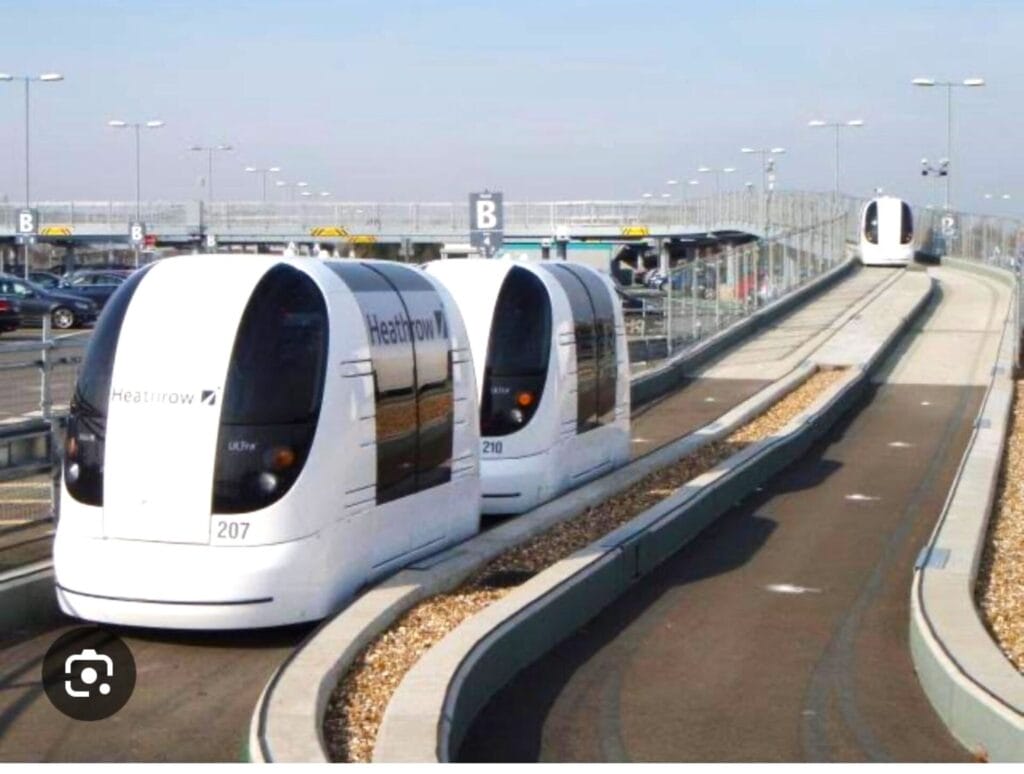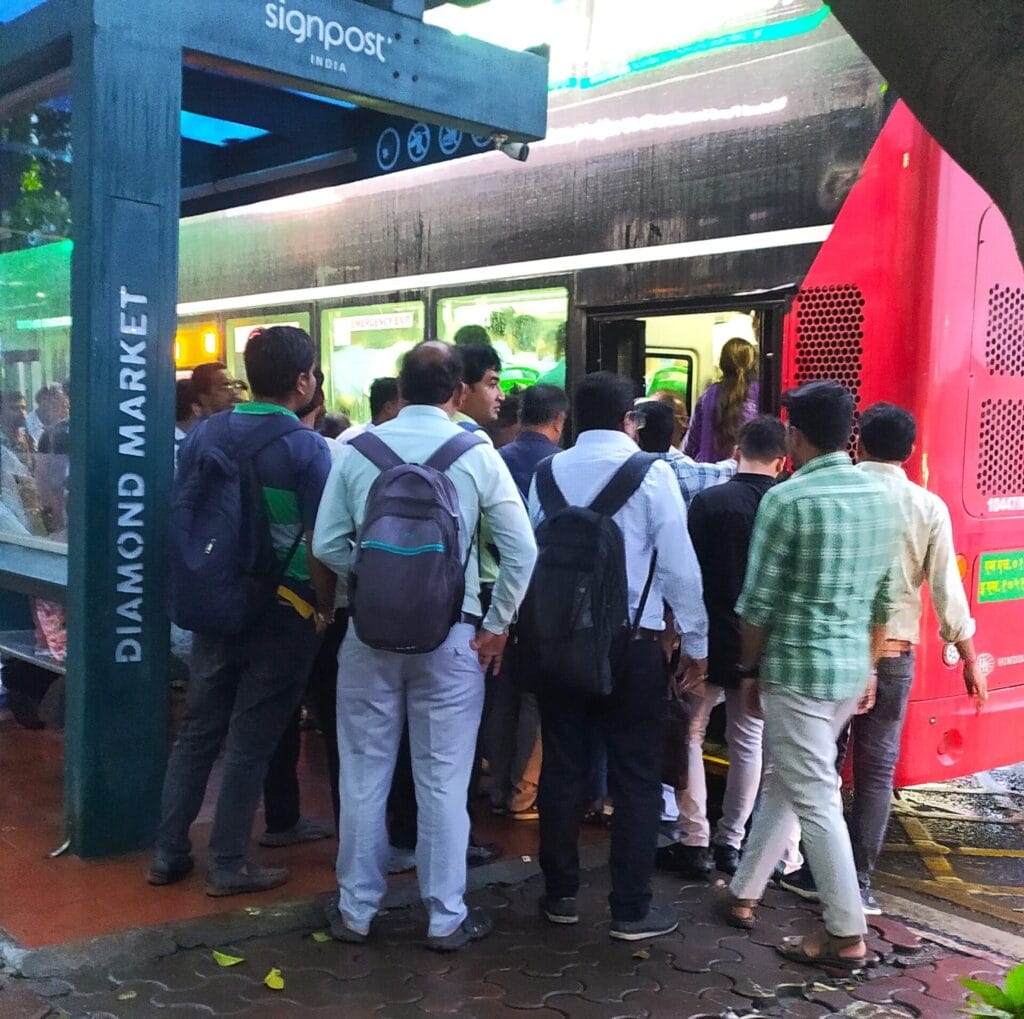Mehul Patel is a harrowed commuter working at the Bandra Kurla Complex, Mumbai’s central business district (CBD) stretched over four sq km that was supposed to be an alternative to Nariman Point. Every evening, he stands in a long serpentine queue waiting for a bus that would allow him at least standing space. Bumper to bumper evening traffic is a daily reality for him. And it has only gotten worse since the work on the bullet train commenced, not to mention the ongoing metro construction work.
What upsets him is the lack of practical solutions. A few years ago, he tried using other options like Yulu bikes but that failed to be a good alternative thanks to maintenance issues.”The bikes were initially good but subsequently charging issues kept cropping. While the cost of Rs 30 for every 20 minutes was reasonable, often due to traffic congestion, we would get stuck up and the charges would keep escalating,” he recalls.
And now to offer respite to many hassled commuters like him, the Mumbai Metropolitan Regional Development Authority (MMRDA) has proposed a new pod taxi service on the congested 8.8 km stretch to connect the Bandra-and Kurla stations with Bandra Kurla Complex (BKC). This solution has been proposed as an alternative to the best buses and shared autos to meet the last mile connectivity needs of the estimated 4-6 lakh office-goers commuting to BKC daily.
The central business district of BKC spread across four sq kms at the heart of the city, contributes about 4% of the country’s GDP, according to former Metropolitan Commissioner of the MMRDA R A Rajeev. After it was planned as an alternative to south Mumbai’s business hubs, many big corporations, banks, diamond markets and consulates moved to BKC. It was followed by international schools, high-end eateries and so on. However, the ground reality of access turned out to be quite a nightmare, with inadequate number of buses and reliance on share-autos for most commuters. We look at the latest proposal of Pod Taxi and if it is viable.
What is a pod taxi?
Pod taxi is an entirely elevated, fully automated driverless service, with each taxi having a carrying capacity of about six persons. The service is expected to be completed in three years. As of now, a commuter spends anywhere from 20 to 40 minutes or even more to cover the 3 km distance from Bandra station to BKC. According to authorities, this service will operate with a frequency of 15-30 seconds, thus offering an alternative to the congested BKC road traffic in peak hours.
Pod taxis are meant to address the last-mile connectivity issues. Currently, BKC is marred by last-mile connectivity issues due to huge mismatch in demand-supply of public transportation services.

The buses are crowded, long queues are a common sight. The share-auto rickshaws are inadequate and the drivers often charge exorbitantly during peak hour traffic. The issue of last-mile connectivity is so acute that many offices have private buses to ferry their employees to the nearest railway stations.The Metro services are yet to start and its ongoing work adds to the traffic.
Against this background, the MMRDA feels that pod taxis would “revolutionise last-mile connectivity within BKC.” The pod taxis are “ideally suited for the narrow roads connecting BKC to Bandra and Kurla suburban stations,” it says. They will also meet the anticipated rise in footfall due to upcoming infrastructure developments such as the bullet train and new commercial buildings
Read more: The causes and fixes to traffic in Mumbai: A discussion
How much will travelling in a pod taxi cost?
Pod taxis will cost Rs 21 per km with an annual hike of 4% to factor in the inflation and maintenance costs. So, travelling from Bandra (E) to the Diamond market, about 3.5 kms should cost Rs 52.
The MMRDA states that fares were determined based on a Techno-Economic Feasibility Study (TEFS) study survey that found that 70% of auto users and 36% of bus users were willing to pay Rs. 21 per km. The survey had found that this fare was closer to the Rs 15.33 / km that people paid for metered autos and Rs 30 – 40 per seat in shared autos and Rs. 18.67 / km for metered taxis.
What is the project cost?
Set to cost Rs 1016.34 crores, this project will be entirely designed, constructed, operated and maintained on a design finance build operate and transfer (DFBOT) basis by Hyderabad-based M/s Sai Green Mobility Private Limited. The financial model here includes provisions for a fixed fee and a percentage of revenue sharing with MMRDA over the contract period of 30 years.
Where are pod taxis available?
Currently, pod taxis are operational mainly in the Heathrow airport, London. In India, Noida had announced India’s first pod taxi in May 2023, but it is yet to take off as it failed to get bidders for their project.
Does BKC need pod taxis?
The MMRDA says that it has zeroed in on this project after exploring various technologies operational across the globe. “The decision to implement the pod taxi system was taken following a comprehensive TEFS commissioned by MMRDA, which explored various technologies operational across the globe. The study recommended the Pod Taxi system for BKC due to its suitability for the region’s topography and the expected traffic growth, suitability for the region’s topography and the expected traffic growth,” a MMRDA statement informs.

However, activists raise questions about the manner in which projects are launched without consulting people. “Neither the Comprehensive Transport Survey (CTS) nor the project reports are available in public domain for scrutiny. Nor are public consultations held before launching such projects.
Often such expensive and lucrative projects are pushed by consultants, with no accountability, even if, in reality, the usage is less than 30% of the projected capacity. The MMRDA monorail project is a classic example. Often cheap, workable simple solutions like posting enough traffic policemen at signals and disciplining auto drivers could work in BKC, but are ignored in favour of costly projects that promise money-minting opportunities,” says Debi Goenka, Trustee of the Conservation Action Trust.
Incidentally, former Metropolitan Commissioner of the MMRDA R A Rajeev had recommended simpler short-term alternatives like banning three-wheelers, introducing mini buses operating in dedicated bus lanes, staggering office timings, and even opening up the barricades blocks put up for metro works.
What alternatives have been tried at BKC before?
This isn’t the first project that has been tried here to resolve the issue of last mile connectivity. The MMRDA had earlier introduced projects like electric Yulu bikes in August 2020. It also offered the option of cycling to work on the BKC cycle tracks, but those failed to emerge as sustainable alternatives to the Best buses and the shared autorickshaws.
Read more: The case for merging Mumbai’s suburban public bus systems
What do commuters say about the pod taxi?
Commuters from BKC, who brace the bad traffic on a daily basis to reach the nearest railway station, feel that this solution is too less and too costly to meet their needs. Mithilesh Dwivedi, who has been working in BKC for the past three years says, “Pod taxis seem a costly option and not feasible for a daily commute. Currently, buses are the cheapest and best. Only hitch is that they are crowded and their frequency is less. If only they improve the frequency, that would be good.”

Mehul says, “A pod taxi catering to just a few passengers is too inadequate to meet the huge numbers of passengers involved. Considering the massive footfall of office-goers working in BKC, only a huge project like Metro would be able to meet the transportation needs here.
What do transport planners say?
Senior transport analyst Ashok Datar of Mumbai Mobility Forum points out the fallacy of promoting cash-rich schemes for every traffic issue and ignoring simpler, cheaper alternatives.
He recalls that way back in 2016, dedicated bus lanes were introduced and were successful in streamlining and reducing traffic in BKC. He remembers, “It took us just three months to earmark the bus lanes and put up the barricades. It ran smoothly because the buses could ply well. With the heavy buses plying on the left side of the road, the mid-size cars and auto rickshaws were able to navigate traffic better towards the centre of the road.”
He adds, “Though it worked very well, the whole concept was dismantled and abandoned one day by removing the barricades because they wanted to bring in the Metro. Why is the government pushing projects like Vande Bharat and Bullet trains that need steep investments and hence longer recovery period over such cheap solutions that can be implemented any time.”